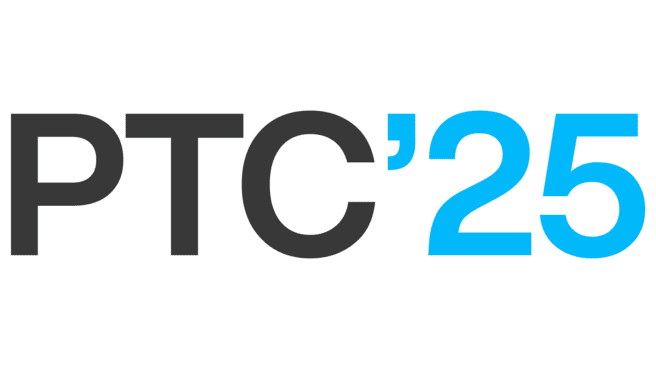Colocation + Connectivity: The Backbone of Global Enterprise Infrastructure
Designing scalable, compliant, and high-performance infrastructure for the connected enterprise

Leader
Three months after launching a global AI-orchestration initiative, the CTO of a leading logistics company hit a hard truth: their cloud-first stack, designed for scale, was throttling real-time workloads. The latency, data gravity, and connectivity gaps became the bottleneck, not their data science models.
Sounds familiar? If your infrastructure is already creaking under the weight of growth, you’re not alone, and the solution may lie in a smarter union of colocation and connectivity. Read on to see how global enterprises are rethinking digital fabric to reclaim performance and control.
The twin pressures of exploding connectivity demand and ever-growing compute density are stressing digital infrastructure in ways few planned for. As enterprises expand globally, the need for colocation and high-performance connectivity has become the linchpin of digital transformation. For MNCs, the choice is no longer whether to adopt colocation, it’s how to build a global, scalable, low-latency digital fabric that supports performance, security and compliance.
Why scalable digital infrastructure matters
When Maersk transformed from a traditional shipping company into a logistics integrator powered by AI, infrastructure, not purely strategy or data models, became their pivot point. To build digital twins, analyse port congestion in real time, and coordinate global supply chains, they had to decentralise compute, optimise data paths, and ensure resilience across regions.
That’s the new reality: MNCs can no longer treat digital infrastructure as a back-end cost centre. McKinsey projects that total global infrastructure investment could exceed USD 106 trillion by 2040, with digital architecture a growing component.
Another McKinsey analysis suggests that by 2030, global data centres may need USD 6.7 trillion in capital investment to scale compute demand, roughly USD 5.2 trillion of which is expected to serve AI workloads.
This is where colocation and connectivity becomes central. By combining purpose-built data centres with direct, high-speed network pathways, enterprises gain the agility to deploy where and when they need, and scale without compromise.
Cloud adjacency: the strategic advantage of colocation
Many enterprises still default to “everything in the public cloud”. But even global cloud platforms cannot guarantee optimal latency, data sovereignty, or interconnectivity in every region. That’s where colocation enables cloud adjacency, where workloads are deployed close to cloud on-ramps, interconnects, and end users.
With colocation, critical workloads can reside in data centres that deliver direct interconnects to hyperscaler regions or Points of Presence (PoPs). This proximity reduces latency, lowers egress/interchange costs, and improves throughput stability. For latency-sensitive services, real-time analytics, AI inference and digital twins, cloud adjacency becomes non-negotiable.
Crucially, this architecture also supports consistent hybrid and multicloud deployment patterns across geographies without sacrificing performance or compliance.
Accelerating intelligent connectivity
To make cloud adjacency real, connectivity must be a first-order design element, not an afterthought.
As a leading provider of global network and infrastructure solutions, we at Telstra International are aligning our colocation footprint with subsea cable landings, cable systems, and direct cloud on-ramps, creating integrated nodes that blend data centre capacity with network throughput. This approach delivers high-speed, low-latency paths between colocation hubs and cloud providers, helping enterprises realise a fluid digital fabric where data and compute can move with minimal friction.
This integrated design is especially valuable for use cases such as AI inference at the edge, real-time analytics, and distributed applications whose performance is highly sensitive to latency.
Making infrastructure AI-ready
Becoming “AI-ready” is not just about installing models, it’s about transforming infrastructure. Too many enterprises struggle with unpredictable latency, data gravity, and network congestion when scaling inference or real-time workloads across regions.
Take Toyota’s shift: factory engineers now build and deploy ML models on the shop floor, saving tens of thousands of hours annually. These gains were only possible because compute was local, data pipelines were dependable, and feedback loops were tightly connected.
With colocation capacity distributed across global regions and integrated high-throughput connectivity, Telstra enables enterprises to design architectures that are flat across geographies. The result: AI workloads run deterministically, data flows with minimal delay, and performance scales as the business grows.
Building responsible infrastructure
Performance and flexibility cannot come at the cost of risk. For multinational enterprises, security, compliance and sustainability must be built into the core of every infrastructure strategy.
Modern colocation environments show what this looks like in practice. The most effective facilities combine:
- Physical and operational controls that ensure constant monitoring, redundancy in power and cooling, and strict access protocols.
- Standards and certifications, such as ISO 27001, that validate a facility’s ability to maintain compliance and resilience.
- Data sovereignty and regulatory alignment that allow enterprises to meet local residency and privacy requirements while still operating globally.
- Sustainable design that reduces environmental impact through renewable energy, efficient cooling, and modular scalability.
These principles define the benchmark for responsible infrastructure, one that balances growth with governance.
Telstra International builds on these same foundations, guided by its our goal of delivering on connections that matter for people, planet, and business. Its infrastructure roadmap reflects this commitment at scale, helping global enterprises achieve both performance and responsibility goals.
How scalable, connected infrastructure comes together
The ability to scale securely and consistently across regions depends on the strength of the underlying digital fabric. A unified approach to colocation and connectivity allows enterprises to operate seamlessly across borders, access local capacity where needed, and maintain performance at a global level.
This model works best when colocation is closely aligned with major submarine cable systems and direct cloud on-ramps, which ensures low latency, high throughput, and true global reach. Tight integration between network and data centre services transforms these assets into a single, intelligent ecosystem that connects compute, data, and users in real time.
Telstra International delivers on this ideal through its global footprint of owned, partnered, and managed data centres in more than 30 countries, supported by an expanding subsea network capable of nearly 800 Tbps. Its colocation options, from flexible racks to private suites, provide the reliability and interoperability enterprises need to scale hybrid and multicloud environments with confidence.
Together, these capabilities enable organisations to orchestrate resilient, secure, and scalable infrastructure across borders without compromising control or compliance.
The future of connected intelligence
Going forward, the competitive edge won’t rest solely on AI. It will be won by how intelligently infrastructure is architected across global regions. Enterprises that can move compute and data fluidly, enforce governance seamlessly, and adapt rapidly to evolving workloads will lead the pack.
For MNCs, the path forward is clear: colocation and connectivity is not a niche option, it’s the foundation of global scale. Providers like Telstra International, which weave physical infrastructure and network capacity into a unified solution, will become essential partners in that journey.


